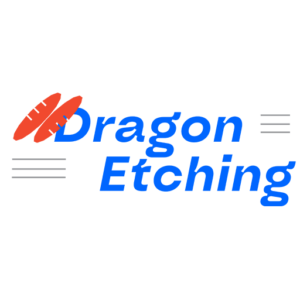Beryllium copper is a copper alloy that contains a small percentage of beryllium, typically ranging from 0.2% to 2.7%. This alloy is highly prized for its exceptional electrical conductivity, heat conductivity, corrosion resistance, and high strength. Beryllium copper is used in various industries, including electronics, aerospace, and automotive, where precise components with excellent electrical properties are required. Chemical etching of beryllium copper is a process used to create precise patterns, markings, or designs on beryllium copper surfaces. Here’s a guide on commonly used methods for etching beryllium copper and how to set important parameters for effective beryllium copper etching:
Commonly Used Beryllium Copper Etchants
- Ammonium Persulfate (NH4)2S2O8
Applications:
- Electrical Contacts: Beryllium copper is often used for electrical connectors and contacts due to its electrical conductivity. Etching can be employed for surface treatment and quality control.
- Springs and Contacts: The alloy is used in springs and contacts where high conductivity and durability are needed.
Setting Parameters:
- Temperature: Etching with ammonium persulfate typically occurs at room temperature, making it a more environmentally friendly etchant compared to some other chemicals.
- Concentration: A common concentration is around 5-10% ammonium persulfate in water. Dilute the solution accurately for consistent results.
- Etching Time: The etching time can vary based on the desired result and the thickness of the beryllium copper, ranging from minutes to several minutes.
- Agitation: Agitation may be required for even etching, and the use of an agitation mechanism within the etching equipment is recommended.
Setting Parameters in a Beryllium Copper Etching Operation
For an effective beryllium copper etching operation using ammonium persulfate as an example:
Temperature:
- Ensure that the etching solution and the workpiece are maintained at room temperature.
Concentration:
- Dilute the ammonium persulfate in water to the desired concentration, such as 5-10%, ensuring accuracy in measurements.
Etching Time:
- Determine the appropriate etching time based on the thickness of the beryllium copper and the desired pattern or surface modification. Start with a short duration and adjust as needed.
Agitation:
- Employ an agitation system to maintain proper mixing of the etching solution during the process for consistent results.
Safety:
- Always prioritize safety when working with chemicals. Wear appropriate personal protective equipment (PPE) such as gloves, safety goggles, and lab coats. Ensure that the workspace is well-ventilated and equipped with safety showers and eyewash stations.
Waste Disposal:
- Dispose of the used etchant solution following local regulations. Proper handling and disposal are essential, especially for chemicals like ammonium persulfate.
If you have an Beryllium Copper etching project that you need help with, please contact us

